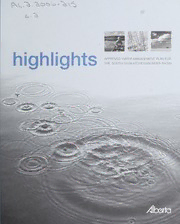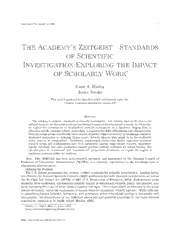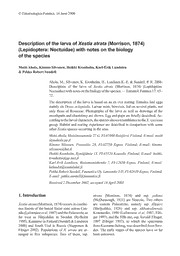
Preview Thomas Annan
P H O T O G R A P H E R TH O M A S TH O M A S P H O T O G R A P H E R O F G L A S G O W A N N A N A N N A N O F G L A S G O W Thomas Annan (Scottish, 1829–1887) ranked as the preeminent Thomas Annan (Scottish, 1829–1887) ranked as the preeminent photographer of Glasgow in the mid-nineteenth century, when photographer of Glasgow in the mid-nineteenth century, when the the population of the “second city” of the British Empire increased population of the “second city” of the British Empire increased dramatically and industrial production neared its peak. Annan dramatically and industrial production neared its peak. Annan opened opened his eponymous photographic firm in Glasgow in 1857 and North Sea his eponymous photographic firm in Glasgow in 1857 and maintained a maintained a studio there until his death, when his brother Robert, SCOTLAND studio there until his death, when his brother Robert, and sons John and sons John and James Craig, took over the business. and James Craig, took over the business. Trossachs Edinburgh Glasgow Amid diverse artistic interests that ranged from portraiture to Amid diverse artistic interests that ranged from studio portraiture to landscapes to photographic reproductions of paintings, Annan is photographic reproductions of paintings to landscapes, Annan is principally remembered for his documentation of numerous municipal ISLE OF MAN principally remembered for his documentation of numerous municipal initiatives that concerned Glasgow’s built environment. Such work initiatives that concerned Glasgow’s built environment. Such work traced the evolution of that densely populated, rapidly changing city traced the evolution of that densely populated, rapidly changing city ENGLAND and its surroundings for approximately thirty years. Best known for WALES and its surroundings for approxreimcoartdeinlyg ttheinretym yeenat rbsu.i ldBiengsst kanndo wpans sfoarg eways, or closes, prior to recording tenement buildings daenmd opliatiosns—agae pwroajyesc,t orer gcalrodseeds a, sp ari ohra rtboin ger of social documentary demolition—a project regardedp haosto ag rhapahrby—inAgnenr aonf wsoorckieadl dono creulmateedn tcairvyic projects that included photography—Annan worked ocno nrsetTlrhaeu Jtc. ePtaiduol G nect toiyv Mfi uctshe uepm rLoojechc tKsa tthrinaet ianqculeudduecdt, the relocation of Glasgow © 2016 J. Paul Getty Trust construction of the Loch KatrinCeo llaeqgeu,e adnudc tth, et heexp raenlsoiocna toiof nth oe fh Garlbaosrg. Howis extensive engagement College, and the expansion ofw thithe Ghalarsbgoor.w H aiss ea xstuebnjseicvte f oernmgsa gtheem beansti s of this exhibition, the with Glasgow as a photographfiircs ts tuob sjeucrvt efyo rthmes b trheead btha soifs A onfn tahni’ss prolific career and consider exhibition, the first to survey thhoew b hriesa wdothrk owfa As npnriannte’sd , preroplriofdicu cceadr,e aenrd a dnisds eminated in the form consider how his work was proinf tpehdo, toregprarpohdicuaclelyd il,l uasntrda tdedis psuebmlicinaatiotends. in the form of photographically illustrated publications. P H O T O G R A P H E R TH O M A S P H O T O G R A P H E R TH O M A S TH O M A S P H O T O G R A P H E R TH O M A S P H O T O G R A P H E R O F G L A S G O W A N N A N O F G L A S G O W A N N A N A N N A N O F G L A S G O W A N N A N O F G L A S G O W Thomas Annan (Scottish, 1829–1887) ranked as the preeminent Thomas Annan (Scottish, 1829–1887) ranked as the preeminent Thomas Annan (Scottish, 1829–1887) ranked as the preeminent photographer of Glasgow in the mid-nineteenth century, when Thomas Annan (Scottish, 1829–1887) ranked as the preeminent photographer of Glasgow in the mid-nineteenth century, when photographer of Glasgow in the mid-nineteenth century, when the the population of the “second city” of the British Empire increased photographer of Glasgow in the mid-nineteenth century, when the the population of the “second city” of the British Empire increased population of the “second city” of the British Empire increased dramatically and industrial production neared its peak. Annan population of the “second city” of the British Empire increased dramatically and industrial production neared its peak. Annan dramatically and industrial production neared its peak. Annan opened opened his eponymous photographic firm in Glasgow in 1857 and North Sea dramatically and industrial production neared its peak. Annan opened opened his eponymous photographic firm in Glasgow in 1857 and North Sea his eponymous photographic firm in Glasgow in 1857 and maintained a maintained a studio there until his death, when his brother Robert, his eponymous photographic firm in Glasgow in 1857 and maintained a maintained a studio there until his death, when his brother Robert, SCOTLAND studio there until his death, when his brother Robert, and sons John and sons John and James Craig, took over the business. SCOTLAND studio there until his death, when his brother Robert, and sons John and sons John and James Craig, took over the business. and James Craig, took over the business. Trossachs Edinburgh and James Craig, took over the business. Trossachs Edinburgh Glasgow Amid diverse artistic interests that ranged from portraiture to Glasgow Amid diverse artistic interests that ranged from portraiture to Amid diverse artistic interests that ranged from studio portraiture to landscapes to photographic reproductions of paintings, Annan is Amid diverse artistic interests that ranged from studio portraiture to landscapes to photographic reproductions of paintings, Annan is photographic reproductions of paintings to landscapes, Annan is principally remembered for his documentation of numerous municipal photographic reproductions of paintings to landscapes, Annan is ISLE OF MAN principally remembered for his documentation of numerous municipal ISLE OF MAN principally remembered for his documentation of numerous municipal initiatives that concerned Glasgow’s built environment. Such work principally remembered for his documentation of numerous municipal initiatives that concerned Glasgow’s built environment. Such work initiatives that concerned Glasgow’s built environment. Such work traced the evolution of that densely populated, rapidly changing city initiatives that concerned Glasgow’s built environment. Such work traced the evolution of that densely populated, rapidly changing city ENGLAND traced the evolution of that densely populated, rapidly changing city and its surroundings for approximately thirty years. Best known for ENGLAND traced the evolution of that densely populated, rapidly changing city and its surroundings for approximately thirty years. Best known for WALES and its surroundings for approxreimcoartdeinlyg ttheinretym yeenat rbsu.i ldBiengsst kanndo wpans sfoarg eways, or closes, prior to WALES and its surroundings for approximately thirty years. Best known for recording tenement buildings and passageways, or closes, prior to recording tenement buildings daenmd opliatiosns—agae pwroajyesc,t orer gcalrodseeds a, sp ari ohra rtboin ger of social documentary recording tenement buildings daenmd opliatiosns—agae pwroajyesc,t orer gcalrodseeds a, sp ari ohra rtboin ger of social documentary demolition—a project regardedp haosto ag rhapahrby—inAgnenr aonf wsoorckieadl dono creulmateedn tcairvyic projects that included demolition—a project regardedp haosto ag rhapahrby—inAgnenr aonf wsoorckieadl dono creulmateedn tcairvyic projects that included photography—Annan worked ocno nrsetlrautcetido nc oivfi cth ep rLoojechc tKsa tthrinaet ianqculeudduecdt, the relocation of Glasgow photography—Annan worked ocno nrsetlrautcetido nc oivfi cth ep rLoojechc tKsa tthrinaet ianqculeudduecdt, the relocation of Glasgow construction of the Loch KatrinCeo llaeqgeu,e adnudc tth, et heexp raenlsoiocna toiof nth oe fh Garlbaosrg. Howis extensive engagement construction of the Loch KatrinCeo llaeqgeu,e adnudc tth, et heexp raenlsoiocna toiof nth oe fh Garlbaosrg. Howis extensive engagement College, and the expansion ofw thithe Ghalarsbgoor.w H aiss ea xstuebnjseicvte f oernmgsa gtheem beansti s of this exhibition, the College, and the expansion ofw thithe Ghalarsbgoor.w H aiss ea xstuebnjseicvte f oernmgsa gtheem beansti s of this exhibition, the with Glasgow as a photographfiircs ts tuob sjeucrvt efyo rthmes b trheead btha soifs A onfn tahni’ss prolific career and consider with Glasgow as a photographfiircs ts tuob sjeucrvt efyo rthmes b trheead btha soifs A onfn tahni’ss prolific career and consider exhibition, the first to survey thhoew b hriesa wdothrk owfa As npnriannte’sd , preroplriofdicu cceadr,e aenrd a dnisds eminated in the form exhibition, the first to survey thhoew b hriesa wdothrk owfa As npnriannte’sd , preroplriofdicu cceadr,e aenrd a dnisds eminated in the form consider how his work was proinf tpehdo, toregprarpohdicuaclelyd il,l uasntrda tdedis psuebmlicinaatiotends. in consider how his work was proinf tpehdo, toregprarpohdicuaclelyd il,l uasntrda tdedis psuebmlicinaatiotends. in the form of photographically illustrated publications. the form of photographically illustrated publications. The J. Paul Getty Museum © 2016 J. Paul Getty Trust O LD C LO S E S & STR E ETS Thomas Annan is best known today for the haunting series Photographs of Old Closes and Streets, considered an early example of social documentary photography. Between 1868 and 1871 he produced at least thirty-one images that depict streets, tenements, and passageways (referred to by such various terms as closes, vennels, and wynds) that were earmarked for modification or demolition as a result of the Glasgow City Improvements Act of 1866. A selection of these photographs is on display in this gallery. Dark, narrow, and hidden behind the main thoroughfares of Saltmarket, Gallowgate, Trongate, and High Street, the closes were difficult to explore and photograph. Moreover, these passageways—and the tenement houses surrounding them—were malodorous hotbeds of crime and disease. Annan somehow surmounted such unfavorable conditions to generate a photographic project that continues to fascinate, in part because its origins and motivations remain unclear. Presumably charged by the Improvement Trust to Glasgow Cathedral record these sites before they were George Square Necropolis demolished, Annan also included the George Street Duke Street et laborers and families who inhabited e Str h g Hi Tontine Buildings Glasgow College Trongate OlBdl aVceknfnriealrs Road the tenements, injecting a sense Glasgow Cross Tron Church Lon Gallowgate of humanity into his work. Urinals, d o RIVER CLY Bridgegate ket n Street DE ar m St. Andrew’s Church alt drains, laundry, and other signifiers of S modernized sanitation further suggest that Annan was attempting to portray Gorbals N progress already underway. Glasgow city center The J. Paul Getty Museum © 2016 J. Paul Getty Trust LO C H KATR I N E As migrants from the Scottish Highlands and Ireland flocked to Glasgow in search of work in the 1700s and 1800s, the dramatic rise in population strained resources, including the supply of clean water available within the city. By the mid-1840s, this shortage escalated to a crisis. Increasingly polluted by sewage and chemical waste, the local River Clyde could no longer service the people of Glasgow. Forced to identify an alternative water source, city officials ultimately proposed an initiative to channel fifty million gallons of water daily from Loch Katrine, approximately thirty-five miles away in a wooded area called the Trossachs. Commonly known as the Loch Katrine aqueduct scheme, this massive engineering effort required excavating wild, scenic terrain to lay pipeline. Between 1855 and 1859, laborers constructed seventy tunnels to direct clean water from the lake into the city. Presumably commissioned by the Glasgow Waterworks Corporation to document these feats of engineering, Annan first photographed the aqueduct around 1859. On display in this gallery are some of his earliest photographs of SCOTLAND Trossachs the subject, at one time compiled in North Basin a book called Views on the Line of L och L the Loch Katrine Waterworks that u L b o n ch Katrine aig has since been disbound. They Ben A’an e Fyn Loch Chon ch Loch Venachar Lo Ben VenueLoch Achway Loch Ard underscore the relationship between Ben Lomond Aberfoyle man and the environment, and invite Duchray Stirling contemplation about the nature of Balfron L o c h L omond progress through industry. Killearn Balloch RI Mugdock Reservoir V E R CLYDE Dumbarton Glasgow N Map of the Trossachs, featuring Loch Katrine The J. Paul Getty Museum © 2016 J. Paul Getty Trust D O C U M E NTATI O N O F LO C H KATR I N E After generating the images of the Loch Katrine aqueduct scheme in 1859, Annan continued to document the loch and the evolution of the waterworks. For more than two decades, he made photographs of landscapes, engineering works, and people in relation to this project. These later images typically feature more refined, complex compositions, as well as aspects of the engineering efforts that could not have been photographed prior to 1860. Two examples are shown here, while others appear in the book titled Photographic Views of Loch Katrine, four copies of which are on view in the center of the gallery. The sequence of images in the book loosely mimics the southbound course that the water traveled from Loch Katrine to Glasgow. The J. Paul Getty Museum © 2016 J. Paul Getty Trust OTH E R R E P R E S E NTATI O N S O F LO C H KATR I N E The release of Sir Walter Scott’s epic poem The Lady of the Lake catapulted Loch Katrine and the Trossachs—a lush, wooded area northeast of Glasgow renowned for its scenic views and lakes, including Loch Katrine—into fashionable tourist destinations. The poem also inspired many artists to represent the lake, including Horatio McCulloch and J. M. W. Turner. Among the first photographers y, r e to depict the location was ll a G t r A & William Henry Fox Talbot, m u e s u M who included scenes of th cil er n P u o f C o y s s s Loch Katrine in Sun Pictures e o rt nr u Ki o c & e h g in Scotland (1845). George t a r m e P I Horatio McCulloch, Loch Katrine, 1866 Washington Wilson and James Valentine, contemporaries of Annan, also capitalized on the loch’s popularity by producing numerous views of the area and offering them for sale as prints or stereoscopic cards. The J. Paul Getty Museum © 2016 J. Paul Getty Trust G LAS G O W C O LLE G E Founded in 1451, the University of Glasgow (0r Glasgow College) occupied buildings on High Street between 1457 and 1870. Numerous problems—including inadequate facilities, overcrowding, “nightly pandemonium of screams and policemen’s rattles,”* and threats posed by the neighboring tenement slums and factories—prompted relocation of the campus from the city center to Gilmorehill in the West End. The move from High Street occurred, however, “not without a lingering, regretful look behind.”** The university evidently recognized the need for a record of these buildings and apparently commissioned Annan to generate it. He made his initial photographs of the college around 1866, documenting distinctive parts of the university buildings on High Street prior to their transformation into a railway goods yard. He produced at least twenty-one images, most of which highlight architectural details such as archways, stonework, stairways, and statues. * John R. Kellett, The Impact of Railways on Victorian Cities (Routledge, 1969). ** Thomas Annan, Memorials of the Old College of Glasgow (James MacLehose, 1871). The J. Paul Getty Museum © 2016 J. Paul Getty Trust U R B A N FA B R I C O F G L A S G O W During the years Annan actively photographed in Glasgow, the built environment of the city changed dramatically to accommodate a burgeoning middle class and increased industrial production and trade. The city center grew more dense, and urban boundaries were reconfigured to absorb peripheral suburbs. Some residents viewed the city’s transformation as progressive, while others perceived the changes less favorably. John Oswald Mitchell, who wrote the introduction to The Old Country Houses of the Old Glasgow Gentry, remarked that Glasgow, in 1870, “looks almost as new as Chicago. But the luxuriant growth hides the ancient stem.”* This gallery features photographs made by Annan in the 1860s and 1870s that reveal, in both subtle and overt ways, how the urban fabric in Glasgow evolved. Concurrent advancements in photographic printing processes, coupled with greater opportunities to publish and disseminate his work in books, proved important professional developments for Annan and his business. *John Buchanan et al., The Old Country Houses of the Old Glasgow Gentry (James MacLehose, 1870). The J. Paul Getty Museum © 2016 J. Paul Getty Trust TH E O LD C O U NTRY H O US E S O F TH E O LD G LAS G O W G E NTRY Changes to the municipal and parliamentary boundaries of Glasgow in the 1840s resulted in the absorption of neighborhoods on the periphery of the city. This outward sprawl into suburbs such as Calton and the Gorbals, coupled with the rising middle-class economy and the overcrowded, heavily polluted urban center, forever altered the landscape of Glasgow. Expansion sometimes forced the demolition or repossession of estates, farms, and other properties. Concern for preserving and memorializing these storied places inspired the publication of The Old Country Houses of the Old Glasgow Gentry. For this ambitious project, several authors researched “one hundred stately homes” and then composed narrative texts tracing the history of each house—which sometimes spanned centuries and frequently involved multiple transfers of ownership. Each narrative is illustrated by one of Annan’s photographs: a small albumen silver print of the estate house and grounds, made in the late 1860s or 1870. Released in 1870, the book was reissued in 1878. By then, ten houses featured in the first edition had disappeared, while “others, with every shrub and tree cut away, stand like victims bared for the axe: and we know not how many more are doomed.”* * John Buchanan et al., The Old Country Houses of the Old Glasgow Gentry (James MacLehose, 1878). The J. Paul Getty Museum © 2016 J. Paul Getty Trust G LAS G O W CATH E D RAL In the 1850s, as restoration of Glasgow Cathedral neared completion, a group of benefactors pledged to fund another beautification project: the production of more than eighty stained glass windows for the nave, transept, choir, and lady chapel of the church. A committee of donors, shepherded by Glasgow School of Art headmaster Charles Heath Wilson, awarded the commission to the Royal Establishment of Glass Painting in Munich in 1857. This was a controversial decision because it outsourced work that British craftsmen could have performed. Ten Bavarian artisans were charged with depicting a range of religious figures and subjects, with “a sequence of striking events in Old Testament history” to be installed in the nave, while parables that revealed “the more tender and peaceful teachings of Christ” were to be placed in the choir. * Annan recorded this effort in more than forty photographs of the windows and cathedral, compiled in The Painted Windows of Glasgow Cathedral. Despite numerous technical obstacles—from the height of the windows to the difficulty of producing a single exposure that registered multiple colors of glass—Annan achieved great consistency and tonal balance in his black-and-white photographs. The technique he used to produce these prints remains unknown. * Stephen Adam, in The Book of Glasgow Cathedral: A History and Description, ed. George Eyre-Todd (Morison Brothers, 1898). The J. Paul Getty Museum © 2016 J. Paul Getty Trust
Description:The list of books you might like

As Good as Dead

Credence

The Silent Patient

The 5 Second Rule: Transform your Life, Work, and Confidence with Everyday Courage

Culture, Communication, and Dependency: The Tradition of H.A. Innis (Communication, Culture, & Information Studies)

Statutes of the Province of Ontario 2006 pt. 3
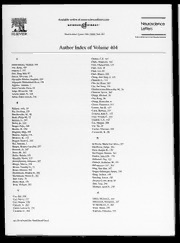
Neuroscience Letters 2006: Vol 404 Index

Chroniques des vampires - Tome 2 - Lestat le Vampire

Presenting electromagnetic theory in accordance with the principle of causality
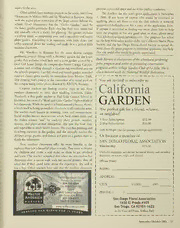
California Garden, Vol. 97, No.5, September-October 2006
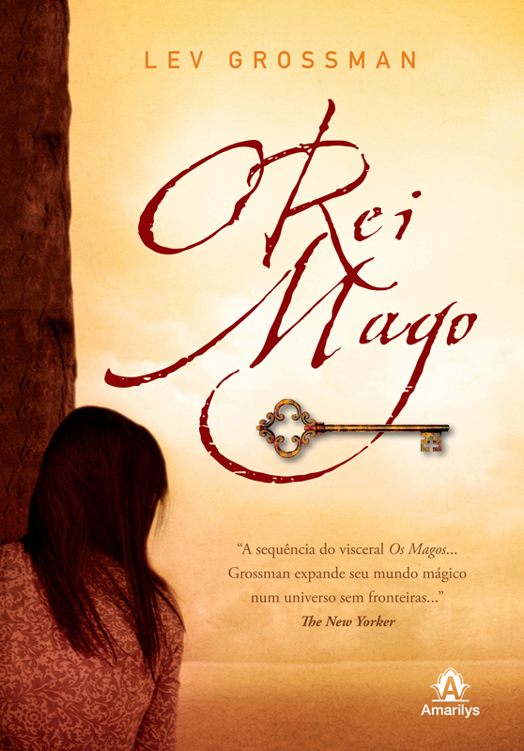
O Rei Mago
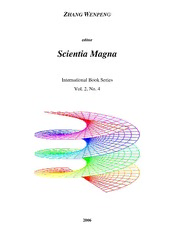
Scientia Magna, book series, Vol. 2, No. 4
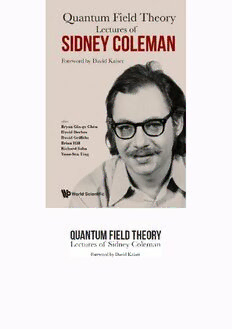
Lectures of Sidney Coleman on Quantum Field Theory (Foreword by David Kaiser)
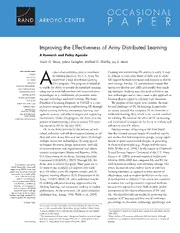
DTIC ADA454635: Improving the Effectiveness of Army Distributed Learning: A Research and Policy Agenda
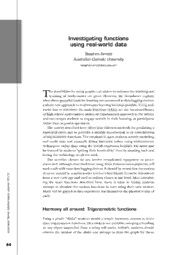
ERIC EJ744021: Investigating Functions Using Real-World Data
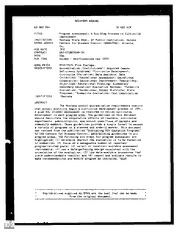
ERIC ED362564: Program Assessment: A Six-Step Process to Curriculum Improvement.

Odisha Gazette, 2006-01-07, No. 53

ERIC ED361046: Reinventing Teaching and Testing: Quality Learning for Quality Employment.

Caderno de Iniciação à Pesquisa Vol. 07
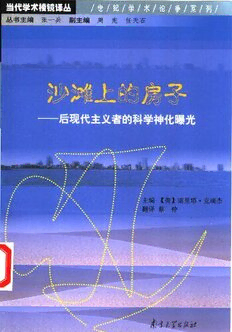
沙滩上的房子: 后现代主义者的科学神话曝光 (A House Built on Sand: Exposing Postmodernist Myths About Science)
